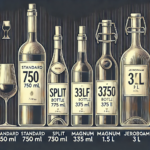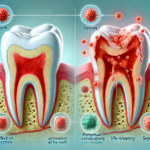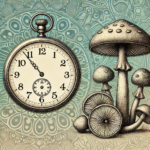How Many Periods in Hockey? A Complete Breakdown of Hockey Game Structure
If you’re new to hockey or simply curious about the game’s structure, one of the most common questions is, “How many periods are in hockey?” Hockey is a fast-paced sport with a unique game format compared to other major sports, and understanding how many periods make up a game is essential for fans and players alike. In this article, we’ll break down the number of periods in hockey, how they’re structured, and what makes hockey games different from other sports.
How Many Periods Are in a Hockey Game?
A standard hockey game consists of three periods. Each period lasts 20 minutes of gameplay, making a total of 60 minutes of regulation time. These periods are separated by intermissions that allow players to rest, strategize, and get ready for the next period of action.
- First Period: The game begins with the first period, during which both teams compete for possession of the puck and attempt to score goals.
- Second Period: After the first intermission, the second period begins, continuing the action as teams switch ends of the rink.
- Third Period: The third and final period determines whether a team wins in regulation time or if the game will proceed to overtime.

What Happens if the Game is Tied After Three Periods?
If the score is tied after the third period, the game may enter overtime. Overtime rules differ depending on the league or level of play:
- NHL Overtime: In the NHL (National Hockey League), if a game is tied after the third period, a 5-minute overtime period follows, played in a sudden-death format. The first team to score wins the game.
- Playoff Overtime: In NHL playoffs, the overtime rules are different. Instead of 5 minutes, overtime periods last 20 minutes, and teams play until a goal is scored, with no limit on the number of overtime periods.
- Shootouts: If no goals are scored during the 5-minute overtime in regular-season NHL games, the game proceeds to a shootout, where each team takes turns attempting to score in a one-on-one situation with the opposing team’s goalie.
Why Does Hockey Have Three Periods?
Hockey is structured with three periods to maintain a balance between fast-paced action and giving players time to rest. The origin of three periods dates back to the early days of professional hockey, when players needed breaks due to the intensity of the game and the limited equipment available. The intermissions after each period allow for necessary rest, resurfacing of the ice, and adjustments to team strategy.
The three-period format also breaks the game into manageable segments for both players and fans, providing natural pauses for rest and analysis.
Are There Any Other Game Formats in Hockey?
While most professional hockey leagues, including the NHL, follow the three-period format, there are variations in other leagues:
- International and Olympic Hockey: Most international and Olympic hockey games follow the same three-period format with 20-minute periods, similar to NHL regulations.
- Youth and Amateur Hockey: In some youth hockey leagues, the periods may be shorter (e.g., 15 or 18 minutes), depending on the level of play. However, the standard three-period structure is typically maintained.
- College Hockey: College hockey in the U.S. (NCAA) also follows the three-period, 20-minute-per-period structure. However, in case of a tie, the overtime rules can vary, with some leagues using a 5-minute overtime period followed by a shootout.
How Long is a Hockey Game in Total?
Although the game consists of 60 minutes of regulation time, the actual duration of a hockey game is longer due to intermissions and stoppages. On average, a hockey game lasts about 2 to 2.5 hours. Here’s how the time breaks down:
- Gameplay: 60 minutes (three 20-minute periods)
- Intermissions: Two intermissions of 15-20 minutes each
- Stoppage Time: Time for penalties, offside calls, goals, and face-offs adds additional time.
If the game goes into overtime or a shootout, it can last longer, especially during playoff games where overtime periods can stretch indefinitely until a goal is scored.
Frequently Asked Questions (FAQs)
1. How many periods are in hockey?
Hockey games consist of three 20-minute periods, making up a total of 60 minutes of gameplay in regulation.
2. How many periods in a hockey game if it goes to overtime?
If a hockey game is tied after three periods, it goes into overtime. Regular season NHL games have one 5-minute overtime period, while playoff games have 20-minute sudden-death overtime periods.
3. How long are the intermissions between periods?
Intermissions between periods typically last 15 to 20 minutes, giving players time to rest and for the ice to be resurfaced.
4. How many periods are there in a hockey game at different levels?
Most professional, collegiate, and amateur hockey games follow the three-period format, though the length of each period can vary depending on the league.
5. How long does a hockey game last in real time?
In total, including intermissions and stoppages, a hockey game usually lasts between 2 and 2.5 hours.
Conclusion: How Many Periods in Hockey?
Hockey is an exciting, fast-paced game divided into three periods, each lasting 20 minutes. These periods are designed to keep the game flowing while allowing for necessary breaks between them. In case of a tie, the game can enter overtime or even a shootout, depending on the league rules. Whether you’re watching an NHL game, Olympic hockey, or youth hockey, understanding how many periods are in hockey and how the game is structured will enhance your enjoyment of the sport.









